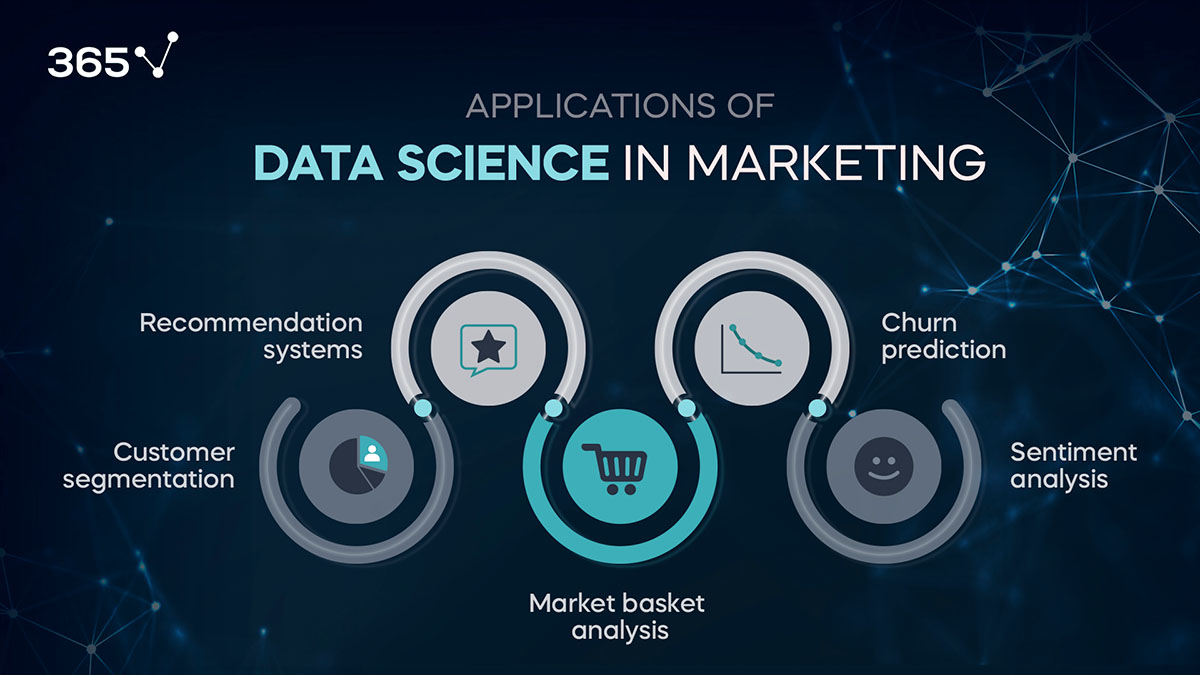
In 2025, the Marketing Data Scientist is one of the coolest jobs in business. It’s a role that mixes number-crunching with creative marketing to help companies figure out what customers want and how to reach them. Think of it as being a detective, but instead of solving crimes, you’re solving puzzles about why people buy stuff—or why they don’t. With data running the show in today’s world, this job is trending big time. Let’s dive into what a Marketing Data Scientist does, why it’s such a hot role, and how you can become one.

What Does a Marketing Data Scientist Do?
A Marketing Data Scientist is the person who digs into data to make marketing smarter. They use numbers, stats, and tech tools to understand customers better and help companies sell more effectively. Whether it’s figuring out why an ad campaign flopped or predicting which product will be a hit, they’re the ones making sense of the data.
They work closely with marketing teams, looking at things like website clicks, social media likes, or sales numbers to spot patterns. For example, they might notice that younger customers love short video ads on X, while older ones stick to email deals. Then, they share those insights to help create ads or campaigns that hit the mark.
This job is all about blending science with creativity. You’re not just staring at spreadsheets—you’re helping craft messages that get people excited about a brand.
Why This Role Is Trending in 2025
Data is everywhere in 2025, and companies are obsessed with using it to get ahead. Marketing used to be about catchy slogans and cool ads, but now it’s about knowing exactly who’s seeing those ads and what makes them click. That’s where Marketing Data Scientists come in—they turn raw data into ideas that make money.
One big reason this role is hot is the rise of AI and machine learning. These tools let Marketing Data Scientists analyze huge amounts of info super fast, like figuring out which customers are likely to buy based on their past behavior. Businesses love this because it saves time and boosts sales.
Another reason is how customers shop now. People are picky—they want ads that feel personal, not generic. A Marketing Data Scientist helps make that happen by digging into data to create tailored campaigns. Plus, with platforms like X amplifying customer opinions, companies need to stay sharp, and these scientists help them keep up.
Key Responsibilities of a Marketing Data Scientist
This job is packed with different tasks, all focused on making marketing better through data. Here’s what a Marketing Data Scientist does day-to-day:
1. Digging into Data
The main gig is collecting and analyzing data. This could be sales records, website traffic, or even what people are saying on X. They use tools like Python or SQL to crunch the numbers and find trends, like why a certain product is selling like crazy in one city but not another.
2. Building Models
Marketing Data Scientists create models—think of them as digital crystal balls—that predict what customers will do. For example, they might build a model to guess who’s likely to buy a new product based on their past purchases. These predictions help marketing teams focus their efforts.
3. Testing Campaigns
Before a big ad campaign goes live, a Marketing Data Scientist might run tests to see what works best. They could try two versions of an ad—one with a funny vibe, one with a serious tone—and see which gets more clicks. This helps companies avoid wasting money on ads that don’t work.
4. Personalizing Marketing
Customers love when things feel made just for them. A Marketing Data Scientist uses data to create personalized experiences, like recommending products based on what someone’s bought before or sending emails tailored to their interests.
5. Sharing Insights
It’s not enough to find cool stuff in the data—you have to explain it to others. Marketing Data Scientists work with marketing teams, designers, or even the CEO to share what they’ve learned. They might present a report showing why a campaign worked or suggest new ideas based on their findings.
6. Keeping Up with Tech
Tech changes fast, and Marketing Data Scientists need to stay on top of it. Whether it’s a new AI tool or a better way to analyze data, they’re always learning to make their work sharper and more effective.
Skills You Need to Be a Marketing Data Scientist
This job takes a mix of tech skills, marketing know-how, and a knack for storytelling. Here’s what you need to succeed:
1. Data Crunching
You’ve got to be comfortable with numbers. Knowing how to use tools like Python, R, or SQL is a must for analyzing data. You don’t need to be a math genius, but you should enjoy digging into spreadsheets and finding patterns.
2. Marketing Smarts
Understanding how marketing works is key. You need to know what makes a good ad, why branding matters, and how to grab customers’ attention. Experience in marketing or even just following brands on X can help you get the vibe.
3. Communication
You’ll be explaining complicated data stuff to people who might not get it, like creative teams or executives. Being able to break things down in simple, everyday language is huge. You also need to tell a story with the data to get people excited about your ideas.
4. Problem-Solving
Every day brings new puzzles—like why a campaign isn’t working or how to reach a new group of customers. You need to think creatively and come up with solutions that make sense for the business.
5. Tech Curiosity
The best Marketing Data Scientists are always learning about new tools, like AI platforms or analytics software. Staying curious and keeping up with tech trends keeps you ahead of the game.
Why Companies Need Marketing Data Scientists
In 2025, marketing without data is like cooking without a recipe—you might get lucky, but you’re probably going to mess up. Companies need Marketing Data Scientists to make sure their campaigns hit the target. A good campaign can boost sales, build brand love, and keep customers coming back.
These scientists also save money. By figuring out what works before spending big bucks, companies avoid wasting cash on bad ideas. For example, a Marketing Data Scientist might show that a certain ad only works for one age group, so the company can focus its budget there.
Plus, customers expect more these days. They want ads that feel like they were made just for them, and they’ll ditch brands that feel out of touch. A Marketing Data Scientist uses data to create those personal, spot-on experiences that keep customers happy.
Challenges of Being a Marketing Data Scientist
This job isn’t all fun and games—it comes with some tough stuff. Here’s what you might face:
1. Too Much Data
Sometimes there’s so much data it’s overwhelming. Sorting through it to find what matters takes time and focus. You have to know what to ignore and what to zoom in on.
2. Bridging Tech and Creative
Marketing teams are often split between data nerds and creative types. As a Marketing Data Scientist, you’re stuck in the middle, trying to get both sides to see eye-to-eye. It can be tricky to convince a designer to trust your numbers or a data team to care about a campaign’s vibe.
3. Fast-Paced World
Marketing moves quick. One day you’re analyzing an ad campaign, the next you’re diving into a new product launch. You’ve got to juggle multiple projects and meet tight deadlines without dropping the ball.
4. Handling Pressure
If a campaign flops, people might look to you for answers. You need to stay calm, figure out what went wrong, and come up with a fix—fast. It’s a high-stakes role where your work directly impacts the company’s success.
How to Become a Marketing Data Scientist
If this job sounds like your thing, here’s how to get started:
1. Learn the Basics
Start with a background in data or marketing. A degree in stats, computer science, or business is helpful, but not a must. Online courses on platforms like Coursera or Udemy can teach you data skills like Python or how marketing works.
2. Get Hands-On Experience
Look for jobs or internships in marketing, data analysis, or even customer service. These roles help you understand how businesses use data and what customers care about. Even a part-time gig analyzing social media stats can give you a leg up.
3. Master the Tools
Get comfy with data tools like Python, R, SQL, or platforms like Tableau for visualizing data. Knowing how to use Google Analytics or marketing software like HubSpot is a big bonus. Practice by working on small projects, like analyzing your favorite brand’s X posts.
4. Build Soft Skills
Work on explaining data in a way anyone can understand. Practice presenting ideas to friends or colleagues. Being able to tell a story with numbers is what sets great Marketing Data Scientists apart.
5. Network and Learn
Follow marketing and data pros on X to see what they’re talking about. Join online communities or attend industry events to meet people in the field. A mentor or connection can help you find job openings and learn the ropes.
The Future of the Marketing Data Scientist Role
In 2025 and beyond, this role is only getting bigger. AI is making data analysis faster and smarter, so Marketing Data Scientists will use tools that predict customer behavior with scary accuracy. They’ll also dive deeper into personalizing marketing, like creating ads that feel like they were made for one person.
Social media platforms like X will keep shaping how brands connect with customers. Marketing Data Scientists will need to stay quick, analyzing real-time feedback to tweak campaigns on the fly. They’ll also focus on privacy, making sure data is used ethically as customers get pickier about how their info is handled.
As companies lean more on data, Marketing Data Scientists will become key players in the C-suite, helping shape big decisions about products, branding, and strategy.
Why It’s a Great Job
Being a Marketing Data Scientist is awesome because you get to mix creativity with logic. You’re solving puzzles, telling stories, and helping brands connect with people in a real way. It’s a job where you see the impact of your work—whether it’s a campaign that goes viral or a product that sells out.
Plus, it’s a role with tons of growth. As data becomes the backbone of marketing, companies will keep hiring for this job, and you can work in all kinds of industries, from fashion to tech. If you love digging into data and making things happen, this could be your dream gig.




